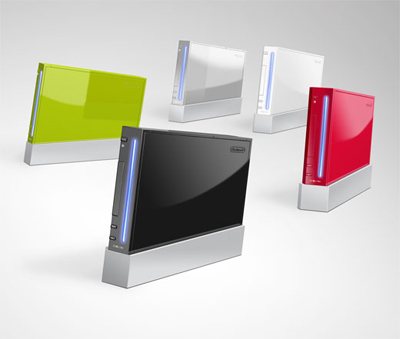
Even at 10 years old, the Wii is something of an enigma. Though it remains one of the best selling consoles ever, its legacy has become tarnished by an enthusiast gaming community that felt largely abandoned by Nintendo’s focus on the casual gaming market during that era. Even the vast mainstream success of the Wii has not translated into much collective nostalgia, with casual consumers letting their systems collect dust after the initial hype faded. But despite these mixed feelings about the Wii, its impact on the gaming landscape cannot be denied. The console upended a lot of our traditional notions of what video games can be, and in doing so brought gaming to new audiences who otherwise would not have considered gaming as a hobby. Although no one could have predicted the diminutive console’s massive reach, its success was no accident. Prior to the Wii’s release, Nintendo had begun to reconsider its approach to video games, and the story of the system cannot be fully told without considering the environment in which it was developed.
To truly understand the Wii, we must consider the state of Nintendo in the run-up to the system’s release. The venerable Japanese video game giant had struggled to find any footing with its latest home console, the Gamecube. While its previous console, the Nintendo 64, managed to carve out a profitable niche by selling highly polished and revolutionary games to a dedicated fanbase, the Gamecube was squeezed out by the ubiquitous Playstation 2 and the cutting edge Xbox. Were it not for the continued success of the Game Boy Advance keeping the company profitable, Nintendo would likely have been forced out of the hardware business entirely. Clearly, another console in the same vein as the Gamecube would not suffice, but what would a next-gen Nintendo console even look like? The answer began to materialize in 2004 from a very unlikely success story.
At E3 2004, Sony announced what seemed like the killing blow against Nintendo. Not content with simply wresting control of the home console business from the House of Mario, they signaled their intent to take on Nintendo’s dominant handheld division with the announcement of the PlayStation Portable. Though many had tried and failed to topple the stalwart Game Boy line over the years, the PSP seemed like the first machine that could actually succeed. With multimedia capabilities, a gorgeous screen, a nub that imitated a control stick, and a processor that could do near-PS2 level visuals, the already aging Game Boy Advance looked like a relic in comparison.
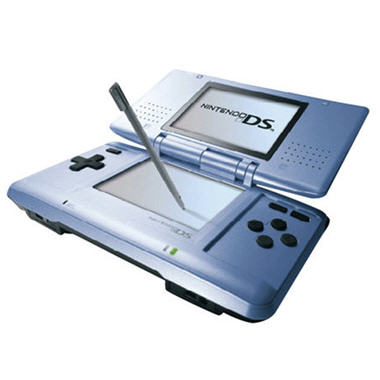
Nintendo’s response to this very real threat was… odd, to say the least. In the months preceding E3 2004, company spokespeople had been teasing a new handheld system codenamed “Nintendo DS”. This system would not be the successor to the Gamecube nor the Game Boy Advance, and instead would exist as a so-called “third pillar”. After much speculation, with the codename inexplicably changed to “Nitro” amid mixed messaging from Nintendo brass, the system was finally revealed at E3 as the Nintendo DS. It possessed a clamshell design akin to the Game Boy Advance SP, but had two screens stacked atop one another. The bottom screen had touch capability and every DS would ship with a stylus to further cement the console as touch based. Though the DS was able to render environments in 3D, its processor could only achieve visuals similar to the ancient Nintendo 64. On paper this seemed like Nintendo’s panicked and disjointed response to Sony’s svelte challenger. However, that autumn the Nintendo DS was released, and with it gaming orthodoxy was turned on its head.
While the DS initially coasted on sales to the Nintendo faithful, and its launch titles demonstrated that developers were still trying to make heads or tails of the quirky new handheld, early 2005 marked a turning point. With the release of games like Nintendogs, Meteos, and Kirby: Canvas Curse, the design language around touch based games began to solidify, and casual consumers took notice. Sales of the system skyrocketed, and with the releases of blockbusters like Mario Kart DS and Brain Age in late 2005/early 2006, it was clear that DS had outmaneuvered the more powerful and better funded PSP. In response, Nintendo quickly abandoned the idea of the DS as a “third pillar” and devoted all handheld resources to the surprise success. But despite this good fortune, the Gamecube continued to struggle. However, Nintendo now had a tested strategy to compete in the upcoming console generation.
By early 2005 it started to become clear that the next generation of home consoles would arrive sooner rather than later. Microsoft, sensing an opening to overtake market leading Sony, announced their Xbox 360, a new console that would be powerful enough to output high definition graphics and take advantage of internet connectivity to deliver online gaming and digital distribution of media. Sony in turn unveiled the Playstation 3 at E3 2005, promising that it would output best-in-class visuals and truly embrace HD with its new Blu-Ray format. Nintendo, however, chose not to say much at all about the Gamecube’s successor. The system was codenamed “Revolution”, it would be about the size of 3 DVD cases stacked together, and the yet-unveiled controller would challenge our preconceptions of what an input device could be. Speculation abounded for the next few months, as Nintendo’s comments downplaying the processing power of the system sparked much debate as to whether the upcoming console could compete against Microsoft and Sony’s behemoths. Thankfully, Nintendo did not wait long to reveal what made the Revolution so special by unveiling the controller at the 2005 Tokyo Game Show.
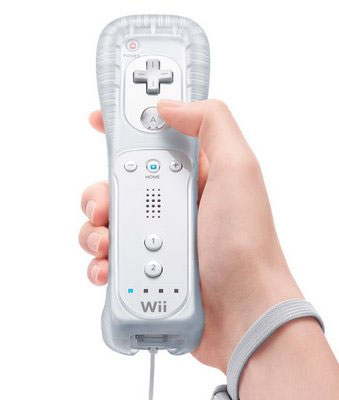
The reveal of the Revolution’s controller was simultaneously surprising and expected. The controller, shaped like a TV remote and meant to be grasped by one hand, would allow for full 3D motion inputs in addition to standard buttons. Furthermore, it would have an infrared pointer, gyroscope, and built-in speaker to allow for a variety of unorthodox inputs and interactions. While the remote itself seemed alien to consumers who were comfortable with traditional gamepads, the design philosophy behind it was a natural extension of the DS’s ethos. Granted. consumer TVs lacked touch capabilities, but Nintendo was able to provide an approximation of the DS’s naturalistic gestures through the combined features of the remote. Discussion amongst enthusiasts shifted to what new types of games would be possible with this exciting input device, but any further news out of Nintendo would have to wait until E3 2006.
With its autumn release fast approaching, Nintendo needed to make a pitch to a gaming market already starting to commit itself to competitor platforms. Their 2006 E3 press conference provided an excellent stage to make that pitch, and they mostly succeeded in doing so. Nintendo articulated their vision for the Revolution as a console that would put graphical fidelity second to good old fashioned gameplay. The demo of the upcoming Red Steel showed off how the remote could breathe new life into action games with realistic feeling swordplay and gunplay. The addition of a nunchuck attachment to the remote would allow the console to support full analog movement, as demonstrated by the highly anticipated The Legend of Zelda: Twilight Princess. And there was also the incredible Wii Sports, but we’ll get to that in a bit.
Aside from the fresh and exciting games on display, the system came with a slew of other features. It would be fully backwards compatible with the Gamecube, going as far as including that system’s controller and memory card ports into its design. It would include a service, dubbed Virtual Console, that would sell digitally distributed games from old consoles by Nintendo, Sega, HudsonSoft, and SNK. Finally, it would include broadband and wireless networking to allow for online gaming and other online activities. With all these new features came with it a new name: Wii. While the odd name was seen as the only real misstep of the presentation, the Wii branding became synonymous over the next few years with Nintendo’s new direction.
Come North American launch day on November 19th, 2006, the hype for the Wii had reached stratospheric levels. Lines formed days in advance in front of stores by fans eager to purchase Nintendo’s latest gambit. At launch, the Wii was priced at $249 USD and came bundled with one remote, one nunchuk attachment, and a copy of Wii Sports. Compared to the $299 USD base model Xbox 360 and the $499 USD base model PlayStation 3, the Wii’s price seemed more than reasonable. While the initial week sellout was expected, the Wii remained incredibly difficult to find for the next several months. Word had spread from the early adopters to the mainstream consumer, and the Wii quickly became the hottest item of Christmas 2006. Demand grew so high that consoles were selling on eBay for over $1000 USD, and flipping Wiis became a highly profitable venture for many.
The early days of the Wii felt very much akin to the post-launch of the Nintendo DS, albeit with a sure-footedness that was missing in the handheld’s early days. The Legend of Zelda: Twilight Princess satisfied the Nintendo faithful with a very good franchise entry that made limited but effective use of the motion controls. Non-conventional titles like Elebits and Trauma Center: Second Opinion were flawed but intriguing forays into embracing the inherent weirdness of the console. There were flops, of course, with Red Steel in particular being a broken mess, but there were surprise hits like the charming Rayman Raving Rabbids to make up for it. But when it comes down to it, no game defined the Wii at launch nor through its lifespan as well as Wii Sports.
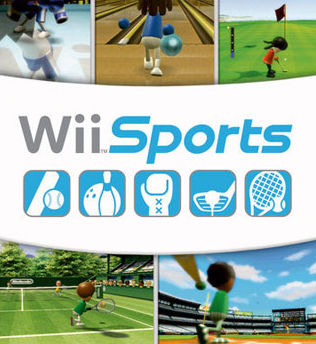
It’s not unreasonable to link the Wii’s massive success to its pack-in game, Wii Sports. The game, a collection of minigames that mimicked sports like tennis, baseball, and bowling, used the Wii remote to replicate these real world activities with a fidelity that would have been impossible with a traditional gamepad. Further, because the concepts and actions inherent in these sports are so well known, the game was easily grasped by even those that had never played a video game before. The accessibility and simplicity of Wii Sports allowed it to penetrate into non-traditional gaming demographics, including seniors who used the game to remain active. The popularity of Wii Sports compelled Nintendo to release other minigame-based collections, including such games as Wii Play and Wii Fit, but none had the same impact as the launch title.
With seemingly everyone swinging around their Wii remotes by 2007, Nintendo doubled down on their runaway hit with a gamut of major releases. The year opened with strong franchise entries in WarioWare: Smooth Moves and Super Paper Mario, continued through the summer with an excellent port of Resident Evil 4 as well as the much awaited Metroid Prime 3: Corruption, and ended the year with the incredible Super Mario Galaxy. Being Mario’s first 3D platformer outing since 2002, expectations were high for Shigeru Miyamoto’s design team to set the bar yet again for 3D gaming. Luckily, Super Mario Galaxy more than delivered, sending the famous plumber on a gorgeous interstellar adventure that put on a masterclass in game design. In a year stacked with classic games such as Portal, Mass Effect, and Bioshock, many critics chose to award Galaxy with their game of the year awards based on its fun and joyful gameplay.
Despite coming off an excellent 2007, the following year started to reveal the cracks in the Wii’s foundation. The Xbox 360 and PlayStation 3 were starting to come into their own, and with an ever increasing amount of consumers purchasing high definition TVs, the Wii’s standard definition oriented visuals began to look dated. Additionally, early grumblings of Wii owners about the console’s limitations, including the unreliable motion controls and lack of third party support, had started to grow louder. The one-two punch of Super Smash Bros. Brawl and Mario Kart Wii in early 2008 helped to quiet fans’ discontent for a time, but it was clear as the year progressed that there were precious few games coming out that were worth playing. The typically crowded fall game release season was notably barren, with only compromised ports, like Tomb Raider: Underworld, or disastrous flops, like Wii Music, dotting the release calendar.
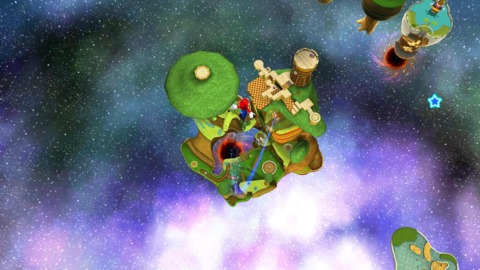
The following year, Nintendo, hoping to address complaints about the motion controls’ lack of fidelity, introduced the Wii MotionPlus. The small cubic device would attach to the bottom of the Wii remote in order to improve the controller’s motion tracking capabilities. While the MotionPlus did in fact work and provided a substantial improvement to controls, it was seen as too little, too late and few games took advantage of the device. The accessory came bundled with a sequel to Wii Sports, named Wii Sports Resort, which attempted to capture the magic of its predecessor but failed to make a comparable impact. With software sales not meeting expectations, enthusiasts jumping ship to Microsoft and Sony, and with the DS becoming a more successful platform to latch on to, Nintendo started backing away from its once-popular home console.
The remainder of the Wii’s life continued down a path towards irrelevance. New releases increasingly tended toward poorly produced shovelware or ports that did not fit well with the system’s capabilities. Occasional releases from Nintendo, such as New Super Mario Bros. Wii, Super Mario Galaxy 2, and The Legend of Zelda: Skyward Sword, were met with indifference. Sadly, quirky third party titles like MadWorld, Dead Space: Extraction, and Boom Blox were also affected by dismal sales, further pushing developers away from the system. By the time the successor console Wii U released in 2012, the Wii had become a punchline for Nintendo’s trendy and half-baked approach to home consoles.
Despite its ignoble end, the Wii deserves a better legacy than the one it’s been currently given. Certainly, Nintendo deserves some blame for not supporting the system better in its later years, but they also deserve credit for making a mass market friendly console in an era when Microsoft and Sony were aggressively focusing on enthusiasts to the detriment of others. The Wii should also be credited for creating one of the first commercially viable game preservation initiatives with the Virtual Console. Further, Nintendo’s commitment to keeping peripherals and controllers backwards compatible should be commended for being forward thinking and consumer-first. Finally, the Wii should be remembered for its small-but-mighty library of generation defining games. So here’s to you Wii, may you gather dust in our hearts forevermore.
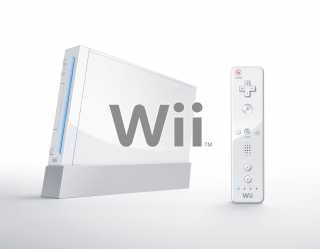
Log in to comment